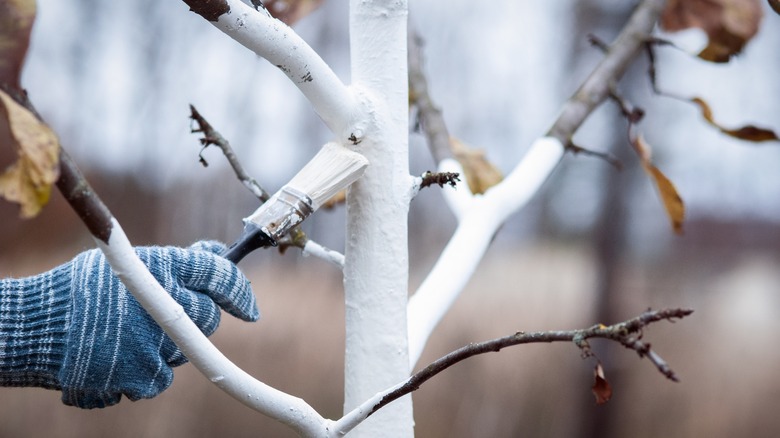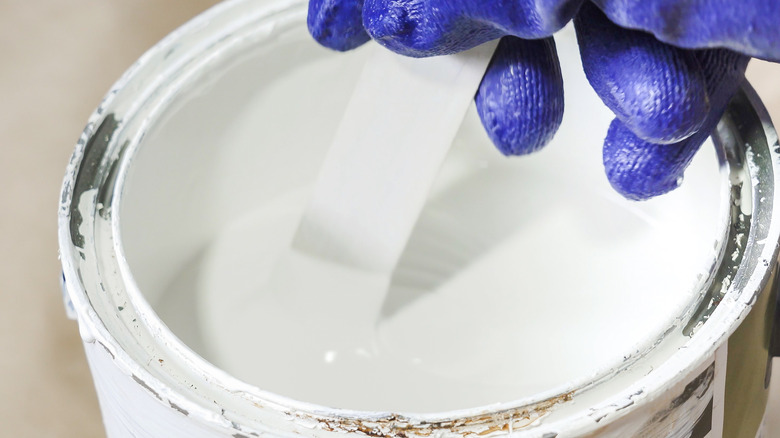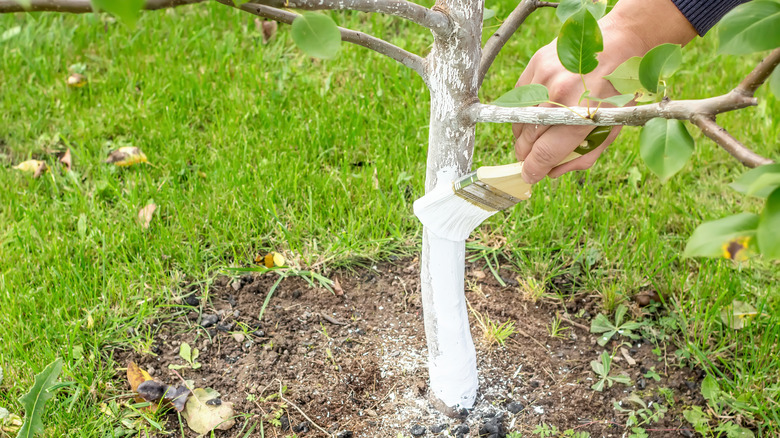Why You Should Be Limewashing Your Fruit Trees & How To Do It
If you have concerns about using pesticides on your fruit trees because you don't want to expose the fruit to potentially harmful chemicals, consider a more eco-friendly option. Limewashing is a process that can protect the trunks from insects and other diseases without harming the tree. It's also extremely easy to do, making it a popular choice. Anyone can apply it, and you can mix the material yourself or you can purchase it pre-made, further simplifying the process.
If you want to apply limewash to your fruit trees, it's important to do it at the right time of the year or you could damage the bark. A late winter or early spring application works best, as the mixture needs to be applied in temperatures of at least 50 degrees Fahrenheit and on a sunny day, so that the liquid dries faster. As long as the liquid is given time to dry properly over several hours, it should not wash away in the rain. It will slowly wear away, but limewash remains effective for many years.
How to mix limewash and apply it to fruit trees
If you prefer to make limewash yourself rather than buying it pre-made, start with a bag of crushed limestone, which also is called hydrated lime or slake. Mix the powder with water in a ratio of one portion of the powder to two portions of water. Some people choose to add a little bit of oil to the mixture, which helps it cling to the bark better. Add the oil at a ratio about 1/100th of the amount of water that you use. Stir the materials together until you end up with a thick liquid, similar in consistency to latex house paint. It's okay to thin out the limewash by adding a bit more water to achieve the desired consistency.
When you are ready to apply the limewash, make sure that the bark is completely dry before starting. Make use of a firm-bristled brush across the trunk to remove dust, moss, lichen, and loose chunks of bark. But don't scrub so hard that you damage the bark. Before applying the limewash, put on long-sleeve clothing, gloves, eye protection, and boots, as the liquid is corrosive should it come into contact with you. Use a flat paint brush to apply the whitewash to the trunk, starting at the bottom and working your way upward. Apply the whitewash to a height of about 18 inches off the ground.
Pros and cons of applying limewash to fruit trees
Don't believe myths about limewashing – it's a technique people have used on tree trunks for centuries, as well as on brick walls and brick buildings, so you can trust its effectiveness and ease of application. Using this mixture on the trunks of fruit trees has a number of benefits that can help your trees remain healthy and productive. For starters, it provides protection against sun damage for the bark. It reflects sunlight, reducing the temperature of the core of the trunk, which improves hydration. Limewash is great at preventing harmful insects from burrowing into the bark and laying eggs, as the material naturally kills existing larvae of insects, which further protects the fruit trees. Fungi and moss cannot gain a foothold on the bark when you apply the limewash to it.
But there are some potential drawbacks to limewashing fruit trees. The biggest one is that the limewash does not differentiate between beneficial insects and harmful insects, so it can prevent "good" bugs from helping the tree pollinate. Additionally, if your trunk has gashes or wounds, the mixture can penetrate the gash and negatively affect the health of the bark.


